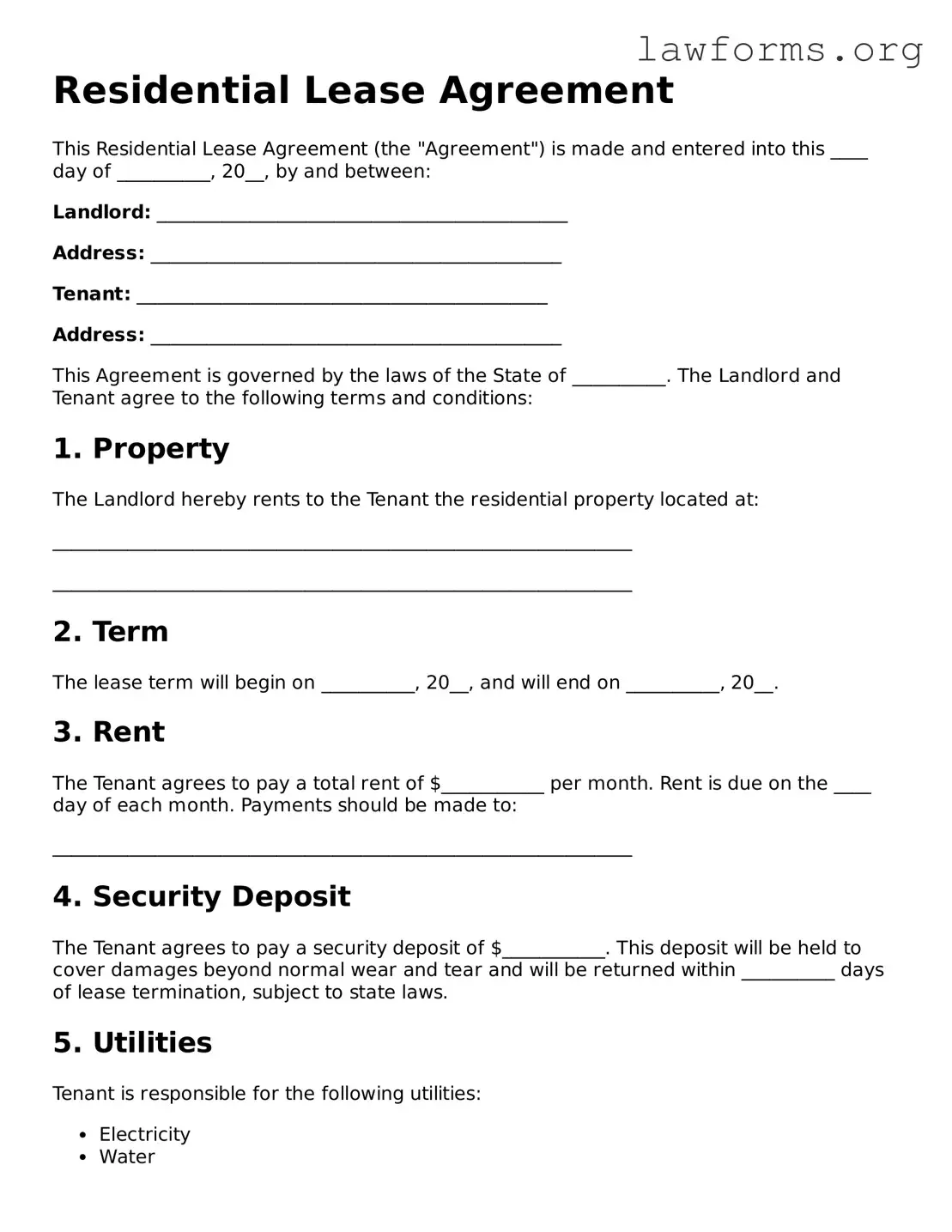Residential Lease Agreement
This Residential Lease Agreement (the "Agreement") is made and entered into this ____ day of __________, 20__, by and between:
Landlord: ____________________________________________
Address: ____________________________________________
Tenant: ____________________________________________
Address: ____________________________________________
This Agreement is governed by the laws of the State of __________. The Landlord and Tenant agree to the following terms and conditions:
1. Property
The Landlord hereby rents to the Tenant the residential property located at:
______________________________________________________________
______________________________________________________________
2. Term
The lease term will begin on __________, 20__, and will end on __________, 20__.
3. Rent
The Tenant agrees to pay a total rent of $___________ per month. Rent is due on the ____ day of each month. Payments should be made to:
______________________________________________________________
4. Security Deposit
The Tenant agrees to pay a security deposit of $___________. This deposit will be held to cover damages beyond normal wear and tear and will be returned within __________ days of lease termination, subject to state laws.
5. Utilities
Tenant is responsible for the following utilities:
- Electricity
- Water
- Gas
- Internet
6. Maintenance and Repairs
The Tenant agrees to keep the premises in good condition. The Landlord will be responsible for major repairs unless due to Tenant’s negligence.
7. Alterations
The Tenant must obtain written consent from the Landlord before making any significant alterations to the property.
8. Pets
The following applies to pets:
- Pets are ____ allowed.
- If allowed, a pet deposit of $___________ is required.
9. Termination
Upon termination of the lease, the Tenant agrees to return the property in the same condition as received, normal wear and tear excepted.
10. Governing Law
This Agreement will be governed by the laws of the State of __________. Any disputes arising under this Agreement will be resolved in accordance with such laws.
IN WITNESS WHEREOF, the parties hereto have executed this Agreement as of the day and year first above written.
Landlord Signature:_________________________ Date: ___________
Tenant Signature:__________________________ Date: ___________
